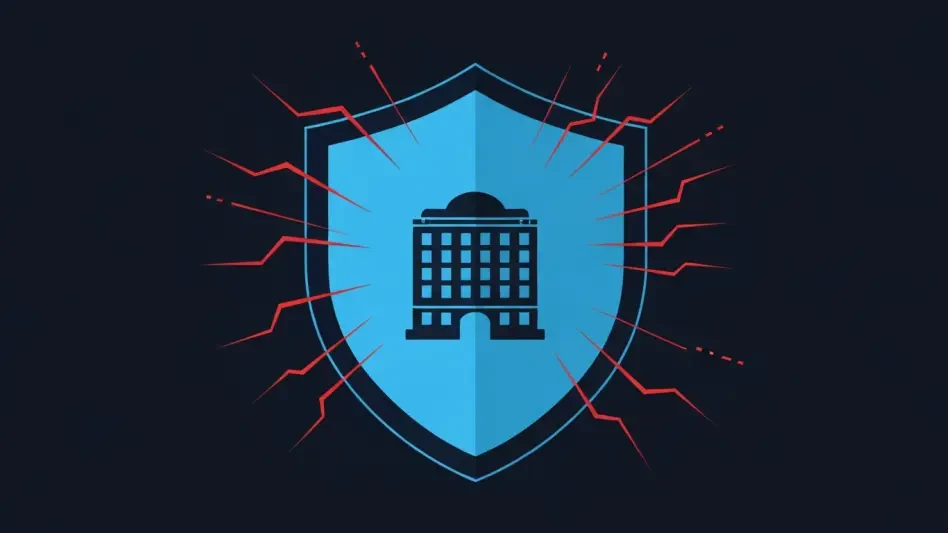In a disturbing case that highlights the dark potential of technology in personal conflicts, a man from Jamestown, North Dakota, found himself at the center of a legal storm due to his alleged misuse of digital tools. Kelly Spivey, aged 58, was recently convicted on charges of computer crime and computer fraud, stemming from a bitter family dispute with his estranged brother. This incident not only sheds light on how easily accessible technology can be weaponized for personal vendettas but also raises critical questions about privacy and intent in the digital age. The court proceedings revealed a complex narrative of conflicting motives and legal outcomes, painting a picture of a deeply personal feud that crossed into criminal territory. As society becomes increasingly reliant on technology for security and communication, cases like this serve as a stark reminder of the vulnerabilities that accompany such advancements, urging a closer look at how digital tools are regulated and protected from abuse.
Unraveling the Digital Intrusion
The core of Spivey’s legal troubles began with an alarming attempt to breach his brother’s privacy through technological means. Court documents detailed how Spivey allegedly solicited a co-worker to hack into his brother’s home security system, providing sensitive personal information such as names, email addresses, phone numbers, and even home addresses to facilitate the intrusion. This act of attempting unauthorized access was not merely a breach of trust but a clear violation of legal boundaries, leading to charges of computer crime and computer fraud, both classified as Class A misdemeanors. While the technology involved offered a sense of security to Spivey’s brother, it became a potential weapon in the hands of someone with malicious intent, highlighting the dual nature of such systems. The ease with which personal data was shared and exploited in this case underscores a broader societal issue: the need for stringent safeguards against digital overreach in personal disputes.
Beyond the act itself, the motivations behind Spivey’s actions remain a point of contention in the legal narrative. Spivey admitted to seeking access to the surveillance system, claiming his intent was to see his father, whom he had not contacted in years, rather than to cause harm. However, this explanation was met with skepticism due to conflicting accounts from co-workers who reported far more sinister intentions. Some alleged that Spivey expressed a desire to harm his brother, with one even stating he discussed plans to kill him when alone. This discrepancy between Spivey’s stated purpose and the accusations from others paints a murky picture of intent, complicating the judicial process. The case illustrates how technology, while a tool for connection, can also become a battleground for unresolved family tensions, where the true purpose behind actions is often obscured by subjective testimonies and personal biases.
Legal Consequences and Sentencing
The judicial outcome of Spivey’s case reflects a focus on the tangible evidence of digital misuse rather than speculative claims of violent intent. Initially facing severe charges, including criminal attempt and terrorizing—classified as felonies—Spivey saw these dismissed in favor of guilty pleas to the lesser computer-related misdemeanors. Judge Troy LeFevre sentenced him to eight days in the Stutsman County Correctional Center, with credit for time served, effectively resulting in no additional incarceration. Additionally, an 18-month supervised probation period was imposed, along with fees such as a $200 criminal administration fee and a $100 defense/facility administration fee. Given that Class A misdemeanors carry a maximum penalty of 360 days in prison and a $3,000 fine, the leniency of this sentence suggests a judicial emphasis on the provable act of computer misuse over unverified allegations of a broader plot.
Examining the sentencing further, it becomes evident that the court prioritized resolution over punishment in this instance. The dismissal of felony charges likely stemmed from insufficient evidence to substantiate claims of a murder plot or terrorizing intent, focusing instead on the concrete act of attempting unauthorized access to a computer system. This outcome raises questions about the challenges of prosecuting intent-based crimes in the digital realm, where actions can be documented, but motives often remain ambiguous. The relatively light penalties also reflect a possible recognition of the personal nature of the conflict, suggesting that the court viewed Spivey’s actions as a misguided attempt to resolve family issues rather than a calculated criminal endeavor. Nevertheless, the probation and financial penalties serve as a reminder that even lesser digital offenses carry consequences, emphasizing the importance of respecting privacy boundaries in an era where technology permeates daily life.
Broader Implications of Technology in Personal Conflicts
Spivey’s case serves as a cautionary tale about the intersection of technology and personal grievances, revealing how digital tools can escalate family disputes into criminal acts. The ease with which personal information can be accessed or shared for nefarious purposes highlights a critical vulnerability in modern security systems, often designed to protect but susceptible to exploitation by those with insider knowledge or malicious intent. This incident underscores the urgent need for enhanced digital literacy among users to recognize and prevent such misuse, as well as stronger legal frameworks to deter potential offenders. As technology continues to evolve, balancing its benefits with the risks of abuse remains a pressing challenge, particularly in emotionally charged contexts like family feuds where rational judgment may be clouded by personal animosities.
Reflecting on this case, it is clear that the legal system must adapt to address the nuances of technology-related crimes, especially when intent is difficult to prove. The disparity between Spivey’s claimed motives and the allegations against him illustrates the complexity of assigning culpability in digital offenses, where actions are often more easily documented than the reasons behind them. Moving forward, there is a compelling need for educational initiatives that inform individuals about the ethical and legal boundaries of technology use, alongside robust cybersecurity measures to protect personal data from unauthorized access. By addressing these issues, society can better mitigate the risks of technology being weaponized in personal conflicts, ensuring that digital advancements serve as tools for progress rather than instruments of harm.








